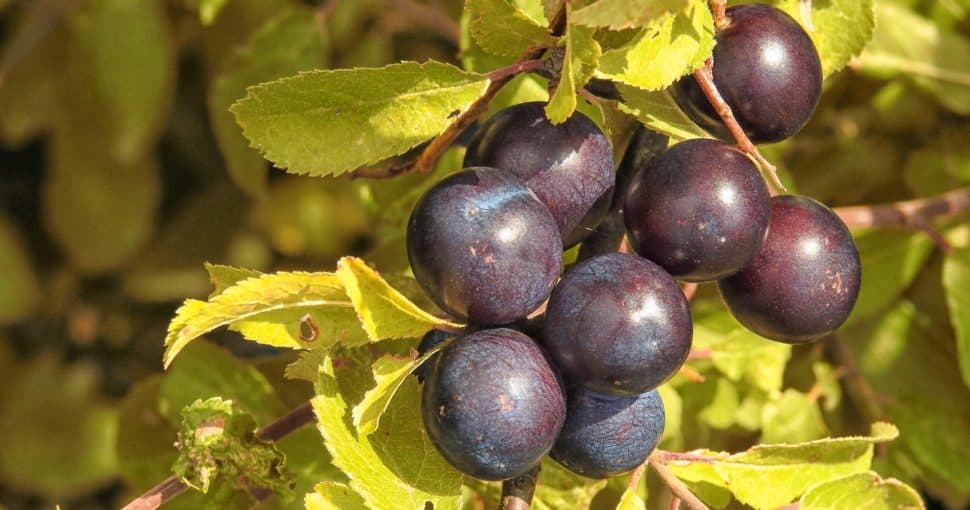There are numerous poisonous plants in the state of Oregon. They can be toxic to both animals and humans. Other than a few, it’s unlikely that you’ll encounter them unless you go traversing through natural landscapes.
Contents
- 1. Poison Oak (Toxicodendron Diversilobum)
- 2. Poison Ivy (Toxicodendron Radicans)
- 3. Stinging Nettle (Urtica Dioica)
- 4. Queen Anne’s Lace/Wild Carrot (Daucus Carota)
- 5. Poison Hemlock (Conium Maculatum)
- 6. Yellow Flag/Yellow Iris (Iris Pseudacorus)
- 7. Azaleas (Rhododendron)
- 8. Belladonna/Deadly Nightshade (Atropa Belladonna)
- 9. Oleander (Nerium Oleander)
- 10. Castor Bean (Ricinus Communis)
- 11. Water Hemlock (Cicuta)
- 12. Foxgloves (Digitalis)
Nevertheless, it’s important to know about these poisonous plants in Oregon. This way, you’ll know what you can touch or eat directly from the wilderness. Also, you can help others know to keep them safe from putting themselves or their pets at risk.
There are various vines, roots, flowers, fruits, or leaves that can even result in paralysis if you consume them. On the other hand, some have what is known as ‘dermal toxicity.’ In that case, you could experience symptoms of toxicity simply by coming into physical contact with these varieties. Thus, when you know about the plants, you can also potentially identify the cause of any symptoms, which can help you or someone you know receive treatment for the correct poisonous plant as soon as possible to limit harm to your body.
Some varieties are also more deadly than others. With that said, this article names and provides a few details on 12 poisonous plants in Oregon.
1. Poison Oak (Toxicodendron Diversilobum)
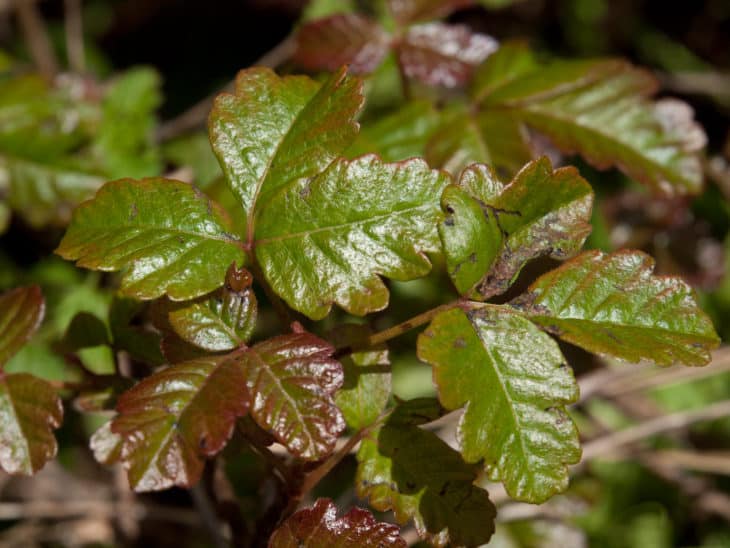
Poison oak looks like a bush when it grows. You can find waxy berries on it. These berries’ colors change over time. So, they may start off as green or yellow and change to white or gray, respectively.
Poison oak has leaves with 3 leaflets that are arranged along the stems alternately. The leaves are oak-like and lobed.
2. Poison Ivy (Toxicodendron Radicans)
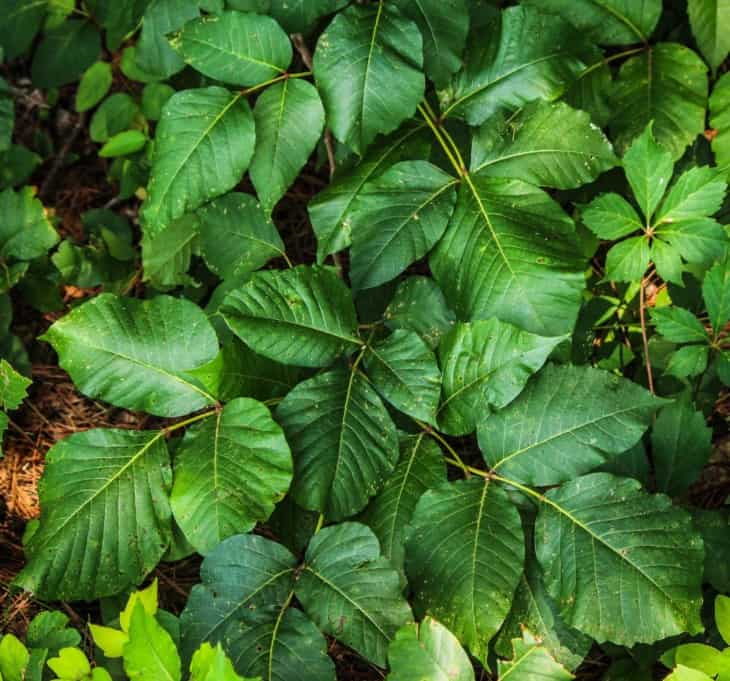
Poison ivy can look a lot like oak. However, you can tell the difference by looking at the leaves. In this plant, the leaves are non-lobed, serrated at the edges, and smooth on the whole.
Like with poison oak, you should not get close to this plant, as physical contact with it could lead to severe dermatitis. Burning it could also release toxic gases.
3. Stinging Nettle (Urtica Dioica)
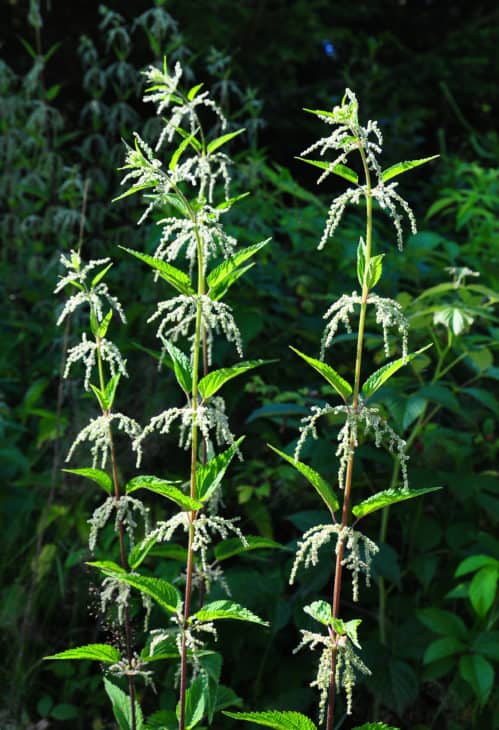
The shape of the leaves of the stinging nettle is oval, and the ends are pointy with jagged teeth on the edges. Each leaf on this plant is opposite to the other and along the stem. In addition, the flowers are arranged in long clusters. The most noticeable feature of this plant is the stinging, spiky spines on the stems and leaves.
4. Queen Anne’s Lace/Wild Carrot (Daucus Carota)
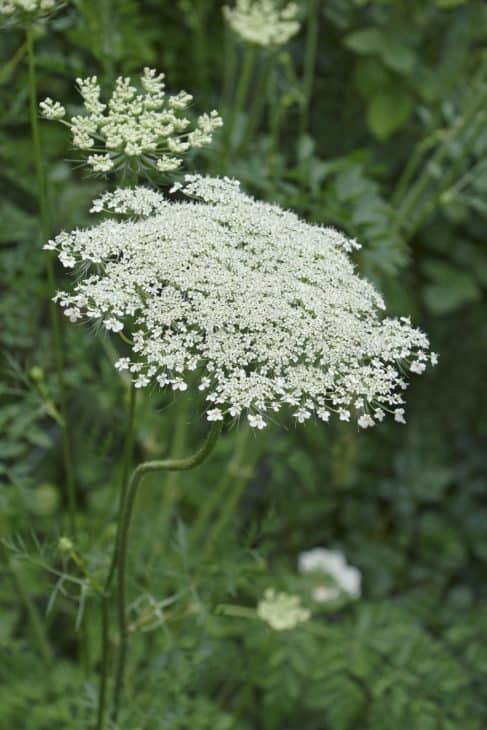
This plant is known as Queen Anne’s lace or wild carrot. The leaves on this plant are triangle in shape, lacy, and divided finely. It has a solid and stiff stem, and the plant has small white flowers that are clustered together. Physical contact with this plant may lead to skin irritation. This is more likely if the plant is wet.
5. Poison Hemlock (Conium Maculatum)
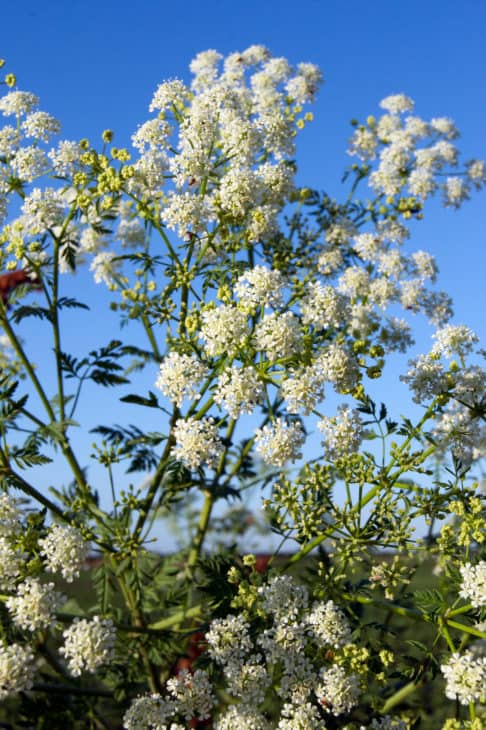
Poison hemlock is an 8-feet tall biennial herb that has hollow and smooth stems. The stems are usually purple with stripes or mottled with red. This plant can also spread through animals, the wind, rivers, and streams, making it even more deadly. It only takes 8 leaves of this plant to kill a human. You can also find this plant in Ohio, as it’s not only present in Oregon.
6. Yellow Flag/Yellow Iris (Iris Pseudacorus)
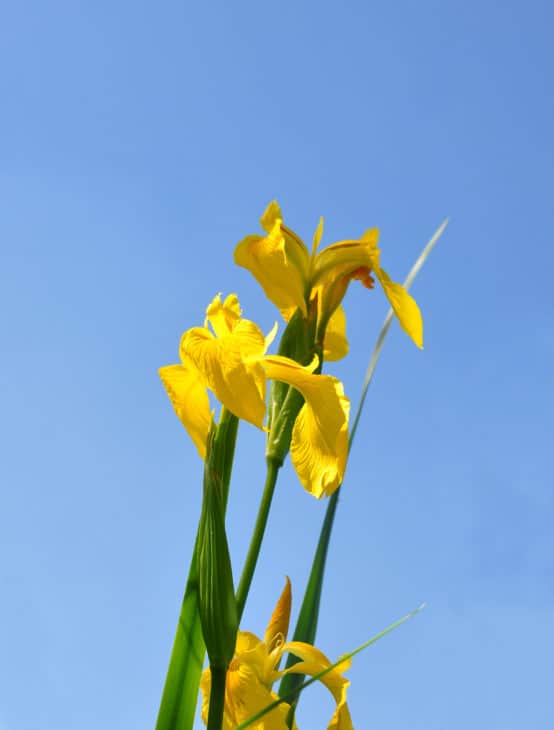
This plant is known as a yellow flag or yellow iris. This plant’s leaves are erect and shaped like swords that can grow as long as 35 inches. It can also have multiple yellow flowers on each stem. This plant is not the most poisonous on this list. However, it can cause symptoms in humans such as vomiting, diarrhea, lethargy, etc.
7. Azaleas (Rhododendron)
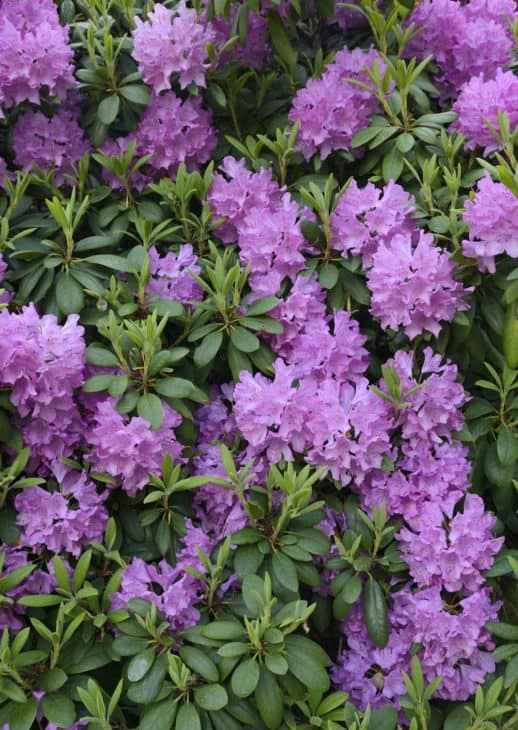
This plant is an evergreen shrub. It includes tubular flowers that are present in clusters. The colors of flowers can vary from purple to pink. You can find this toxic plant in different parts of the United States. Azalea is known for being toxic to Russian tortoises, which can begin with various symptoms and eventually leads to death.
8. Belladonna/Deadly Nightshade (Atropa Belladonna)
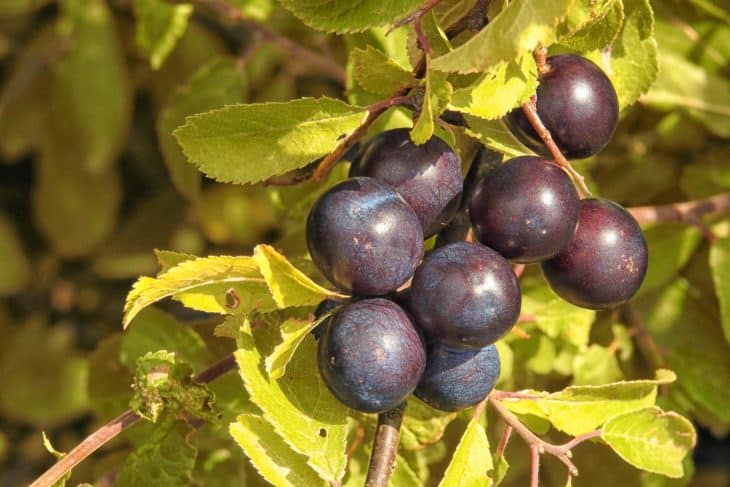
Although belladonna/deadly nightshade is not native to Oregon, it’s commonly found in this state. You can identify the plant by its yellow and purple flowers. It also has berry-like fruits that are oblong in shape and bright red. These plants also have a distinctive foul smell. You can find them in woodlands or other shady areas. Eating any part of the plant could lead to paralysis or elevated pulse rates.
9. Oleander (Nerium Oleander)
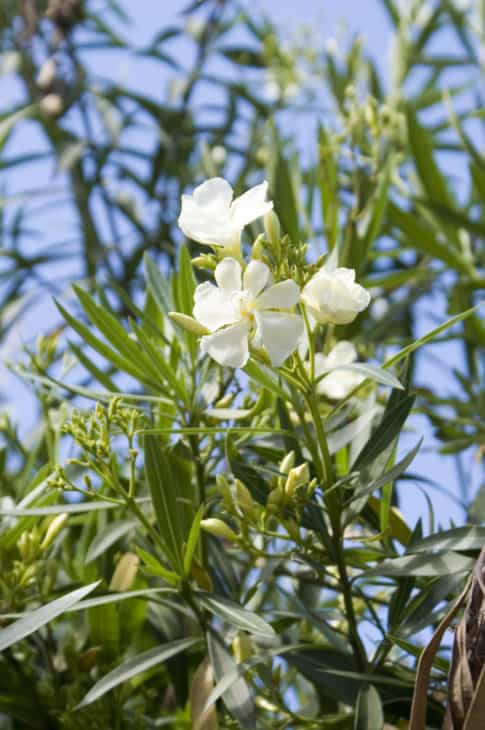
Oleander, a small tree with dark-green leaves, can reach a height of 10 feet. This shrub can contain various flowers that are red, pink, white, or yellow in color. You should especially not eat the stems, branches, or leaves, as they are very poisonous (as is the entire plant). Also, don’t use it as firewood as the fumes can be toxic.
10. Castor Bean (Ricinus Communis)
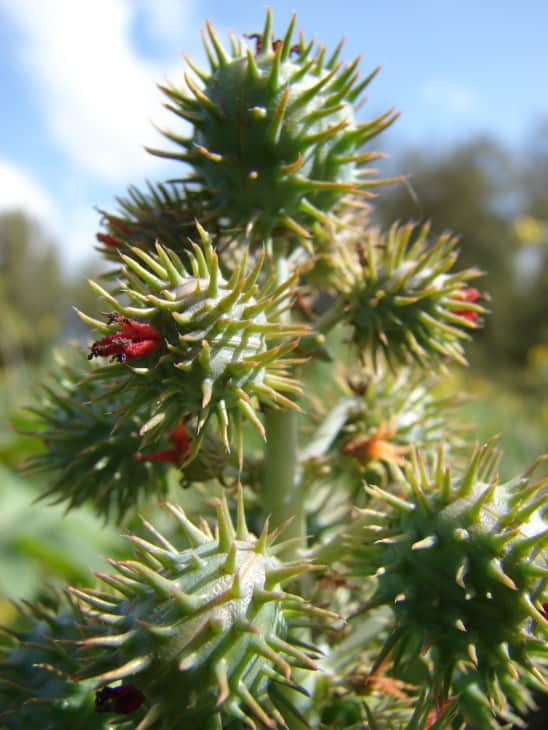
The castor bean plant gets its name from the bean-like shape of its fruit. These fruits are also present in clusters at the top of the plant. The leaves on this plant are large and are shaped like stars.
While the seeds may be the most toxic part of the plant, any part of it is if you ingest it. Ingesting only 2 seeds is enough to kill a healthy human.
11. Water Hemlock (Cicuta)
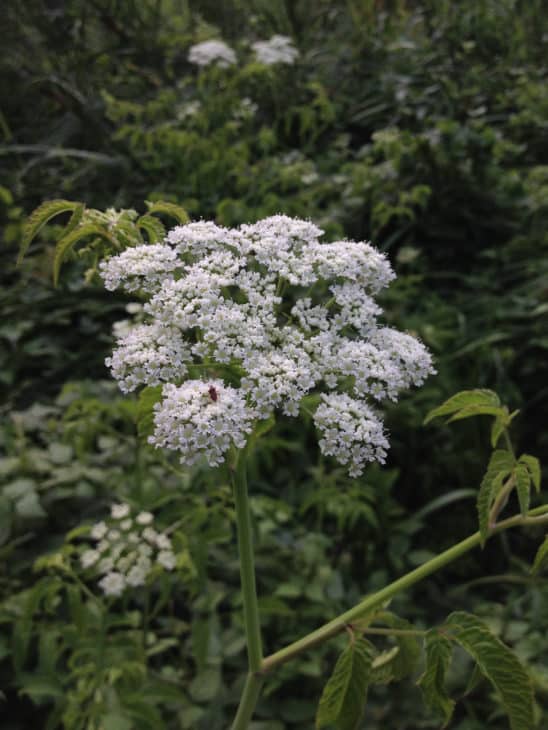
You can identify a water hemlock by its 6-feet tall hollow stems that look like bamboos. The stems of this perennial herb are red striped or purple. It is extremely toxic to ingest water hemlock. The seeds and roots are especially deadly. You may encounter water hemlocks in wet or moist areas like banks of streams, near wetlands or swamps, or within ditches.
12. Foxgloves (Digitalis)
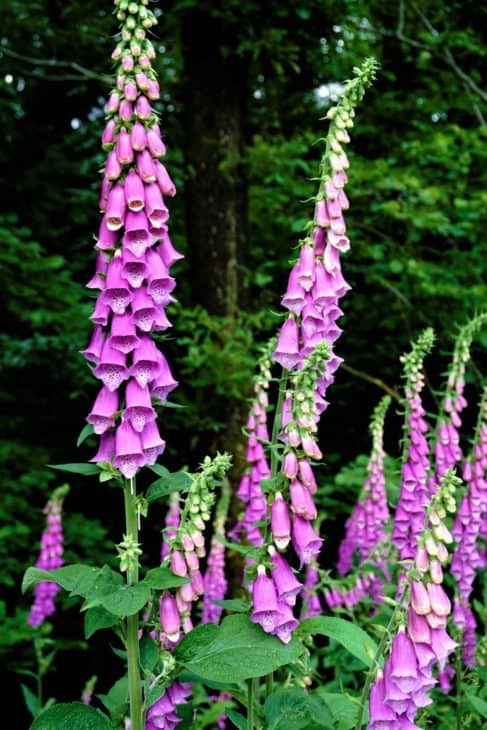
You can identify a foxglove plant with its tubular, drooping flowers that are 3 inches in length. The flowers can be of various colors with spots in every tube. The colors include white, yellow, rose, and pink. This plant can be poisonous to both humans and animals. In the case of the former, one may show symptoms such as weakness, headaches, nausea, abdominal pain, diarrhea, blurred vision, or rashes.

